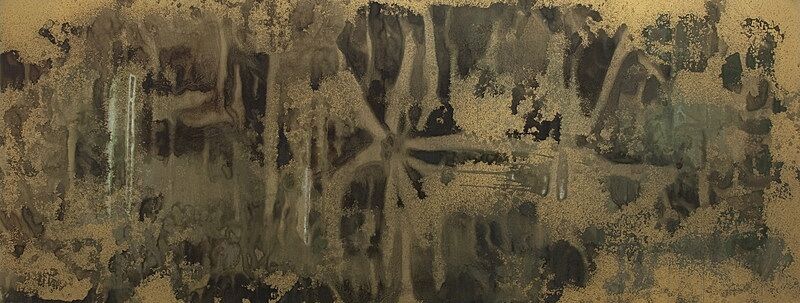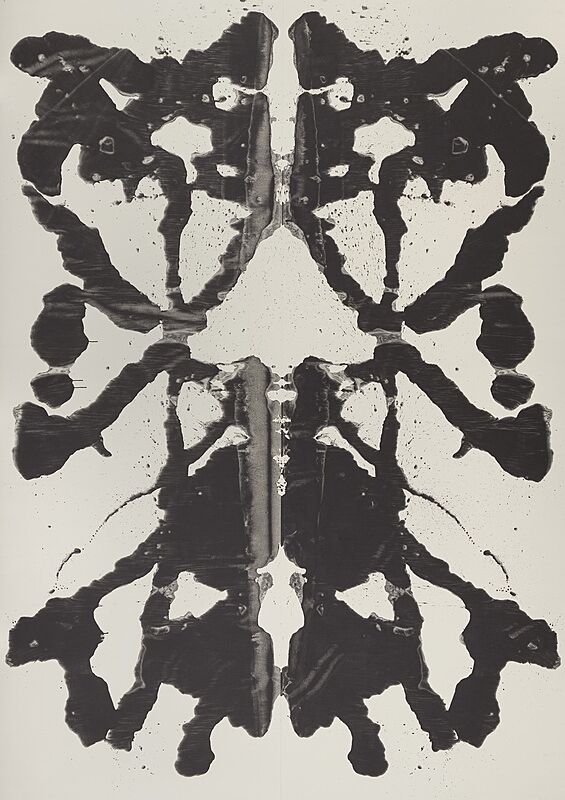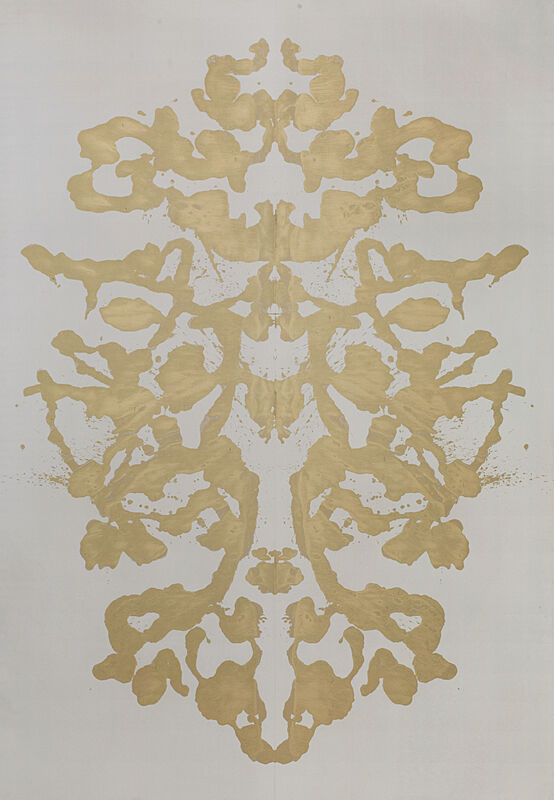Andy Warhol— From A to B and Back Again | Art & Artists
Nov 12, 2018–Mar 31, 2019
Andy Warhol— From A to B and Back Again | Art & Artists
Abstraction
15
Warhol’s experiments with abstraction—in the form of cropping, upscaling, simplifying, blurring, distorting, obscuring, patterning, or otherwise mediating the image—repurposed operations used routinely by art directors to create interest in a news story or product. Warhol was also deeply influenced by the reductive paintings of abstract artists such as Ellsworth Kelly, Barnett Newman, and Ad Reinhardt, and especially during his final decade, his work increasingly had the outward look of abstraction.
"The 60s were clutter. The 70s are very empty.”
Oxidation Painting, 1978
Warhol’s experimental paintings of the late 1970s included abstract works made with urine or semen. For this particular Oxidation Painting Warhol poured urine onto a surface primed with a layer of gold metallic paint but usually he, or sometimes assistants and even guests, urinated directly onto the work.
"I told Ronnie [Cutrone, Warhol’s assistant] not to pee when he gets up in the morning...because he takes lots of vitamin B so the canvas turns a really pretty color when it's his piss."
When exposed to the acids in the urine, a form of alchemy takes place that changes the color of the gold or copper pigment to either black or green depending on the urine’s mineral content. Warhol’s use of an allover drip technique can be seen as both an homage and a queer send-up of the machismo of Jackson Pollock’s canonical Abstract Expressionist works.
-
-
-
Hear artist T. J. Wilcox on Warhol’s bodily approach to abstraction
0:00
Hear artist T. J. Wilcox on Warhol’s bodily approach to abstraction
0:00
-
Related works 15
Related artworks
From the Collection



